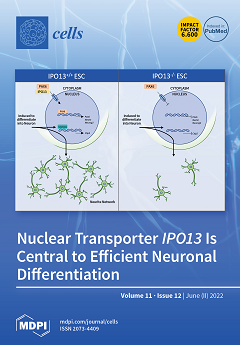Endoplasmic reticulum (ER) stress and neuroinflammation are involved in the pathogenesis of many neurodegenerative disorders. Previously, we reported that exposure to pyrethroid insecticide deltamethrin causes hippocampal ER stress apoptosis, a reduction in neurogenesis, and learning deficits in adult male mice. Recently, we found
[...] Read more.
Endoplasmic reticulum (ER) stress and neuroinflammation are involved in the pathogenesis of many neurodegenerative disorders. Previously, we reported that exposure to pyrethroid insecticide deltamethrin causes hippocampal ER stress apoptosis, a reduction in neurogenesis, and learning deficits in adult male mice. Recently, we found that deltamethrin exposure also increases the markers of neuroinflammation in BV2 cells. Here, we investigated the potential mechanistic link between ER stress and neuroinflammation following exposure to deltamethrin. We found that repeated oral exposure to deltamethrin (3 mg/kg) for 30 days caused microglial activation and increased gene expressions and protein levels of TNF-α, IL-1β, IL-6, gp91
phox, 4HNE, and iNOS in the hippocampus. These changes were preceded by the induction of ER stress as the protein levels of CHOP, ATF-4, and GRP78 were significantly increased in the hippocampus. To determine whether induction of ER stress triggers the inflammatory response, we performed an additional experiment with mouse microglial cell (MMC) line. MMCs were treated with 0–5 µM deltamethrin for 24–48 h in the presence or absence of salubrinal, a pharmacological inhibitor of the ER stress factor eIF2α. We found that salubrinal (50 µM) prevented deltamethrin-induced ER stress, as indicated by decreased levels of CHOP and ATF-4, and attenuated the levels of GSH, 4-HNE, gp91
phox, iNOS, ROS, TNF-α, IL-1β, and IL-6 in MMCs. Together, these results demonstrate that exposure to deltamethrin leads to ER stress-mediated neuroinflammation, which may subsequently contribute to neurodegeneration and cognitive impairment in mice.
Full article






